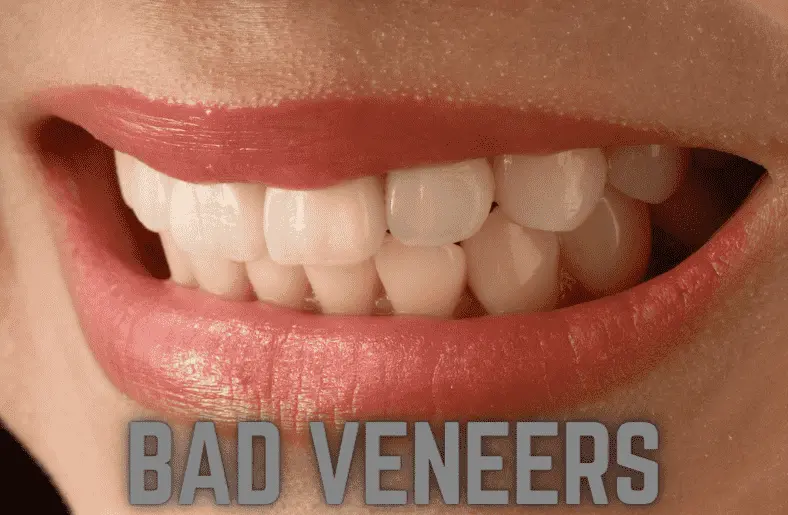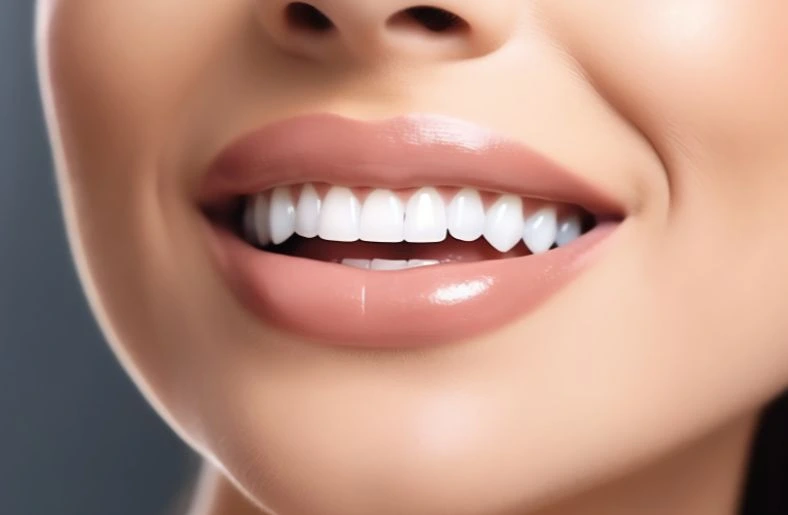Venturing into the realm of cosmetic dentistry often entails the tantalizing promise of a radiant smile. Among the options, dental stands out as a popular choice. However, while they hold the potential for a stunning transformation, the specter of “Bad Veneers” looms. These less-than-ideal outcomes underscore the importance of informed decisions and meticulous care. In this exploration, we journey through the nuances of deciphering the markers of excellence and pitfalls to avoid. Understanding, preventing, and addressing bad veneers becomes imperative for those seeking to embark on this path. Join us as we navigate through this landscape, shedding light on the complexities of the strategies for ensuring a smile that radiates confidence and beauty.
Understanding Bad Veneers
Exploring the Depths of Subpar Dental Veneers
In the realm of cosmetic dentistry, the nuances of flawed veneers unveil a tapestry of imperfections. From ill fit to unnatural aesthetics, these nuances not only mar smiles but also compromise dental health. The presence of excessive thickness or color mismatch often serves as a telltale sign of substandard it. Moreover, instances of gum inflammation or recession may indicate a flawed installation process. It’s imperative to discern these subtle signs, empowering individuals to make informed decisions regarding their dental care. Transitioning from expectation to reality, comprehending the intricacies of bad veneers equips patients with the knowledge to navigate the landscape of cosmetic dentistry effectively. Let’s delve deeper into the complexities and unravel the secrets behind subpar it.
Signs and Symptoms of Bad Veneers
Unveiling the Telltale Indicators of Substandard Dental Enhancements
When scrutinizing veneers, discernible signals emerge, revealing their flawed nature. An ill fit or misalignment often signals inferior craftsmanship. Similarly, an unnatural appearance, characterized by color disparity or excessive thickness, hints at subpar veneers. Moreover, symptoms like tooth sensitivity or gum inflammation may underscore underlying issues. Transitioning from expectation to reality, identifying these signs empowers individuals to address potential concerns promptly. By recognizing these subtle indicators, patients can navigate the realm of cosmetic dentistry with confidence and clarity. Let’s delve into the nuances of these signs and symptoms, unraveling the intricacies of substandard.
Impact on Oral Health and Aesthetics
At the outset, inadequately fitted veneers pose significant challenges, often resulting in discomfort and potential gum inflammation, which, if left unchecked, may lead to gum recession. This detrimental effect not only compromises oral health but also contradicts the very essence of cosmetic enhancement. Furthermore, from an aesthetic standpoint, veneers that are misaligned or exhibit discoloration disrupt facial symmetry, eroding confidence and self-assurance. Transitioning from the realm of anticipation to the reality of dissatisfaction underscores the critical importance of meticulous veneer installation. Thus, understanding the profound impact of poorly executed it serves as a poignant reminder of the imperative nature of expert craftsmanship and diligent post-procedural care. In navigating the landscape of cosmetic dentistry, prioritizing precision not only safeguards oral health but also ensures enduring aesthetic brilliance.
Importance of Proper Preparation
Effective veneer installation hinges on meticulous pre-procedural preparation, ensuring optimal outcomes and minimizing potential complications. Primarily, thorough examination and assessment pave the path for tailored treatment plans, enhancing precision and efficacy. Moreover, comprehensive patient education fosters informed decision-making, empowering individuals to actively participate in their dental journey. Transitioning from apprehension to confidence, transparent communication cultivates trust and alleviates concerns. Furthermore, strategic planning and meticulous attention to detail lay the foundation for seamless procedural execution. Thus, prioritizing proper preparation not only enhances procedural efficiency but also fosters patient satisfaction and long-term oral health.
Fixing Bad Veneers
When faced with unsatisfactory veneers, proactive steps can rectify and enhance their appearance and functionality. Initially, a thorough assessment by experienced professionals identifies underlying issues and informs tailored corrective measures. Subsequent adjustments may involve meticulous reshaping or replacement to achieve optimal aesthetics and functionality. Collaboration between patients and practitioners fosters open communication, ensuring alignment with individual preferences and expectations. Moreover, leveraging advanced techniques and materials enhances precision and durability, promoting long-term satisfaction. Embracing a comprehensive approach to veneer correction prioritizes patient well-being and cultivates confidence in their smile’s appearance and integrity.
Conclusion
In navigating the complex landscape of dental veneers, the journey from expectation to reality unveils the critical importance of informed decisions and meticulous care. From understanding the nuances of flaws to unveiling telltale indicators and comprehending their profound impact on oral health and aesthetics, each aspect underscores the imperative nature of expert craftsmanship and diligent post-procedural care. Prioritizing proper preparation ensures optimal outcomes, fostering patient satisfaction and long-term oral health. Moreover, when faced with unsatisfactory proactive steps can rectify and enhance their appearance and functionality, instilling confidence in patients’ smiles. This comprehensive approach to addressing bad veneers serves as a beacon, guiding individuals toward a path of enduring aesthetic brilliance and oral well-being.
FAQs about Bad Veneers
Q:What are Bad Veneers?
A:Bad veneers refer to dental veneers that exhibit flaws such as ill fit, misalignment, unnatural appearance, or compromised oral health.
Q:How can I Identify Bad Veneers?
A:Look out for signs like an unnatural appearance, excessive thickness, color disparity, tooth sensitivity, gum inflammation, or recession.
Q:What are the Impacts of Bad Veneers on Oral Health?
A:Poorly fitted veneers can lead to discomfort, gum inflammation, and recession, compromising oral health and contradicting the essence of cosmetic enhancement.
Q:Can Bad Veneers be Fixed?
A:Yes, proactive steps involving thorough assessment, meticulous reshaping, or replacement can rectify and enhance the appearance and functionality.
Q:How Important is Proper Preparation for Veneers?
A:Proper preparation before veneer installation is crucial for optimal outcomes, ensuring tailored treatment plans, and enhancing procedural efficiency.
Q:What Should I Do if I Have Unsatisfactory Veneers?
A:If faced with unsatisfactory veneers, seek assessment by experienced professionals for tailored corrective measures and open communication to align with individual preferences.
Q:How Long Do Veneers Last?
A:On average, we can last anywhere from 7 to 15 years before they may need replacement, depending on maintenance and care.
Q:Can I Prevent Getting Bad Veneers?
A:Yes, by researching and choosing experienced dental professionals, prioritizing proper preparation, and maintaining good oral hygiene, the likelihood of getting bad veneers can be minimized.




